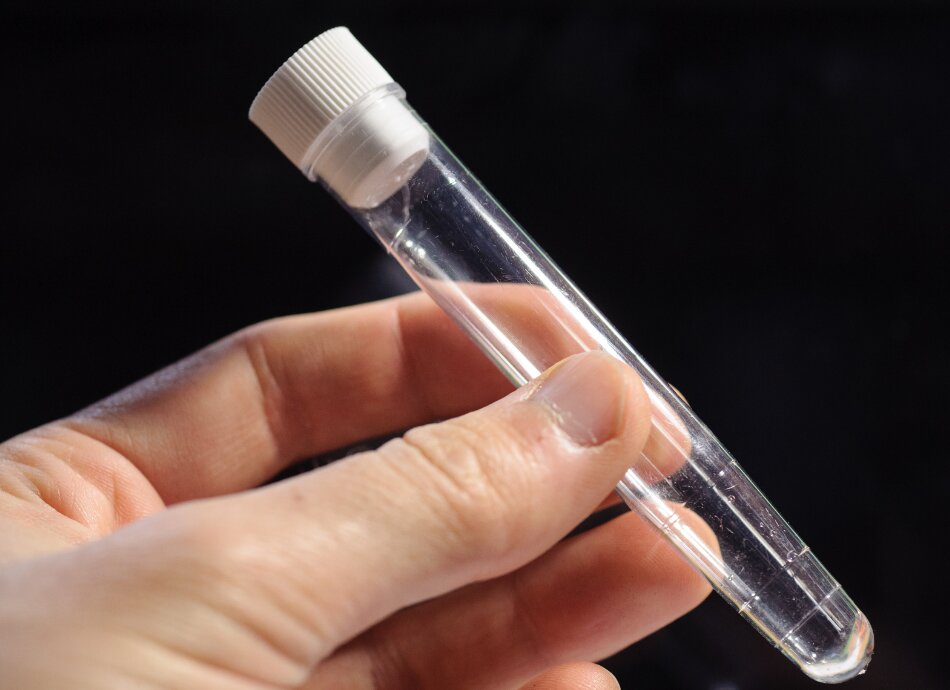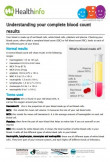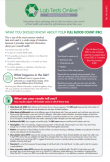An FBC is a commonly ordered blood test needing a blood sample to be taken from a vein in your arm and collected in a tube. This tube is sent to the laboratory for analysis.
Results of an FBC give information about the 3 main types of cells contained in your blood:
- Red blood cells – containing haemoglobin that helps carry oxygen in your blood to other parts of your body.
- White blood cells – there are different types of white blood cells, that each work in a different way to help to fight infection. The cells types are neutrophils, lymphocytes, monocytes, eosinophils, and basophils.
- Platelets – these are blood cells that help your blood clot, eg, after you are injured.
The FBC test is important for diagnosing conditions where the number of blood cells is abnormally high or abnormally low. The results show the number of each of the 3 types of cells in your blood along with a reference range to determine if the level is low, normal, or high. It may also note if any of the cells are abnormal in size or shape.
Reference ranges
Reference ranges provide upper and lower limit values. These values or intervals are regarded as normal ranges or limits. They are calculated based on the population being tested and the equipment used to do the test. Reference ranges are therefore determined by each medical testing laboratory and may vary from laboratory to laboratory. This means you need to interpret your results with your healthcare provider using the values provided by the testing laboratory.
Red blood cells
There are a few ways of counting the red blood cells in an FBC, including haemoglobin, haematocrit and red blood cell counts. The haemoglobin value is usually taken as the most important in most situations.
In some uncommon types of anaemia your doctor or nurse may request a reticulocyte count which helps find out if your body is making new red blood cells.
The test may also show if you have any red blood cells that have an abnormal size or shape. The mean cell volume (MCV) is the size of the cells.
White blood cells
Some FBC tests also show what is called a “white blood cell differential”. The word differential in this case means making a distinction, so all the different types of white blood cells and their values are shown. The cells types are neutrophils, lymphocytes, monocytes, eosinophils and basophils. Increased numbers of particular white blood cells can help pinpoint whether an infection is caused by a bacteria or virus. Some types of blood cancer cause lots of one type of white blood cell to be made, meaning the other cell types can’t be made properly. The test may also show if you have any white blood cells that have an abnormal appearance.
Platelets
The platelet count is just 1 value. It may also show if the platelets have an abnormal appearance.








